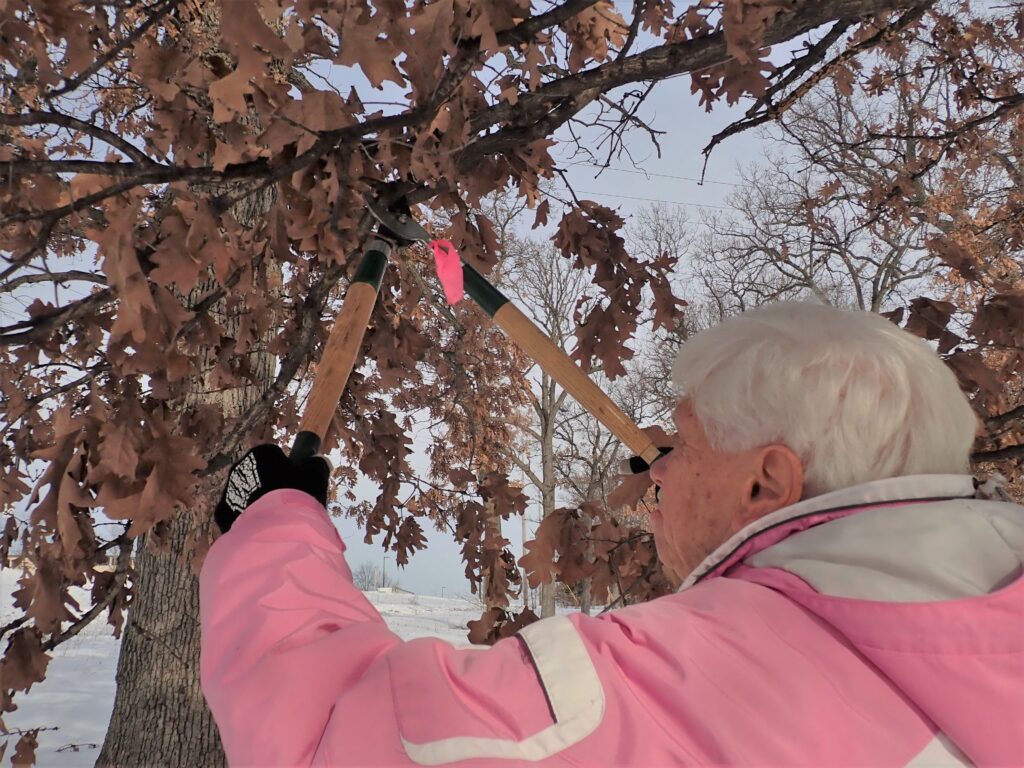Article By: Jaqi Christopher, DNR Forest Invasive Plant Specialist, Rhinelander, Jacquelyn.Christopher@wisconsin.gov

Common Buckthorn leaves with berries. Notice the prominent leaf veins and small thorns at the end of the branches.
Photo Credit: Wisconsin DNR
You can find buckthorn just about anywhere these days. It can sneak into the tidiest of gardens, as well as woodlots and forests. It aggressively outcompetes native plants and even tricks wildlife into spreading it to new areas. For example, birds are enticed to eat the berries, but buckthorn berries have a laxative effect, robbing birds of nutrition and ensuring the seeds are spread quickly across the landscape.
There are two species of buckthorn in the state: common buckthorn and glossy buckthorn. The plants are similar in appearance and equally harmful to native ecosystems. Common buckthorn and glossy buckthorn grow to be 20-25 feet tall. Glossy buckthorn has round, glossy leaves with prominent leaf veins and a smooth margin, while common buckthorn has dull green leaves with small teeth on the margin. The branches of common buckthorn will have a small thorn at the tip of the twig. The bark is similar in both species, being rough and flakey. Native cherry and plum trees have similar bark, but buckthorn can be identified by leaf appearance andby cutting into the bark to expose the bright yellow and orange wood underneath.
Continue reading “Got Buckthorn?” →



